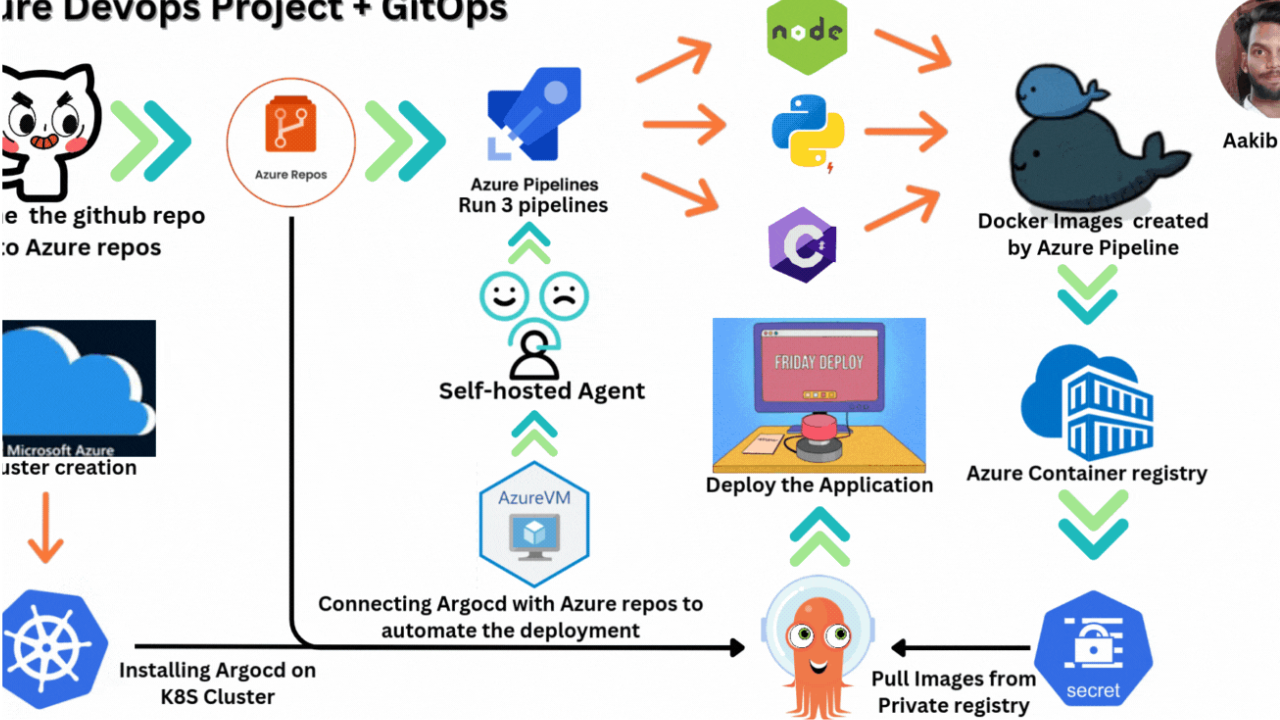Introduction: The Power of DevOps Automation
In the world of instant digital transformation, programming is not so much about code-writing anymore—it’s about bringing high-quality software on time and in an efficient manner. DevOps automation lies at the center of contemporary software development services, where deployment and coding are automated as smoothly as silk. By applying automation to your DevOps pipeline, you are able to accelerate releases, limit the scope for human error, and close the gap between your development and operation teams.
DevOps Automation Explained
DevOps automation is simply script and tool utilisation to automate the entire software development lifecycle (SDLC). Be it code integration and testing or deployment and monitoring, automation takes away the drudgery of repetitive efforts and offers free flow. DevOps automation becomes a success if the right tools are chosen and best practices are followed to form a scalable and healthy pipeline.
Step 1: Version Control – The Pillar of Automation
All successful DevOps pipelines start with version control. Developers utilise tooling like Git to effortlessly track code changes, work in parallel with other team members, and monitor changes. A shared repository like GitHub or GitLab stores code in a centralised and accessible place for continuous integration and deployment.
Step 2: Continuous Integration (CI) – Code Quality Maintenance
Continuous Integration (CI) is the most important step where test automation verifies each code change before it is merged. Jenkins, CircleCI, or GitHub Actions automatically build and test code in a sandbox environment. This is done so that bugs are trapped early and buggy code is not deployed. With CI, code is polished and development cycles are accelerated.
Step 3: Continuous Delivery (CD) – Simple Deployment
Once the code is tested and approved, Continuous Delivery (CD) makes it deployable at will. CD tools such as AWS CodeDeploy, GitLab CI/CD, and Azure DevOps make application deployment automatic and make it repeatable. With good CD pipelines, organisations can deploy new features or updates with zero or minimum downtime, without any inconvenience to the users.
Step 4: Infrastructure as Code (IaC) – Infrastructure Automation
Manual infrastructure management is error-prone and labor-intensive. Infrastructure as Code (IaC) simplifies this by expressing infrastructure settings in code form. Technologies supporting teams to scale, provision, and manage configurations automatically, some of which include Terraform, Ansible, and AWS CloudFormation. This removes inconsistencies, wipes out manual intervention, and accelerates deployment.
Step 5: Monitoring and Logging – Insights to Optimise
A flawless automated DevOps pipeline doesn’t end with deployment but goes further to monitoring and logging to keep track of an application’s performance and identify faults. Monitoring tool real-time feedback from tools like Prometheus, Datadog, and Grafana, logging tools like ELK Stack (Elasticsearch, Logstash, Kibana), and active monitoring avoid downtime and have a guarantee of seamless operations.
Step 6: DevOps Security – Implementing DevSecOps
Security cannot be an afterthought in DevOps. Security should be baked into practice—i.e., DevSecOps—so that risk is caught early and remediated. Automated security scanners like Snyk, SonarQube, and OWASP ZAP catch issues early in development. Security baked into the DevOps pipeline enables teams to ship secure apps without compromise.
The Future of DevOps Automation
With the advancement of technology, DevOps automation becomes more intelligent with AI, machine learning, and sophisticated orchestration tools leading to analytics. Firms can move quickly, operate with higher efficiency, and act as market disruptors through DevOps automation. The best software developers utilise hyper-automation for automating, streamlining, and optimising productivity to help organisations remain at the forefront in the dynamic digital ecosystem.
Conclusion: Elevate Your DevOps Journey with Automation
DevOps automation is what software development in the modern age needs, breaking bottlenecks, and speeding up delivery cycles. Version control, CI/CD pipelines, infrastructure automation, and continuous monitoring can bestow enterprises, whether startup or enterprise, agility, reliability, and security when deploying. Automation of DevOps can bring the best out in your software development, whatever company you represent.
Lastly, are you prepared to streamline your DevOps process and drive innovation faster? The time is now to start!



